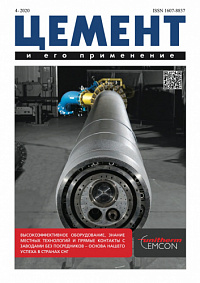Information on the trends in mergers and acquisitions (M&A) in the global cement industry and individual regions in 2005-2019 and early 2020 is presented. Periods of high M&A activity have alternated with years of its sharp decline. Influence of various factors ...
The countries of Eastern (Russia, Turkey and Ukraine) and South-Eastern Europe (Bulgaria, Romania, Serbia, Slovenia and Croatia) are members of the Eastern European Construction Forecasting Association (EECFA). The article presents data on the GD...
Data on the development of the construction sector in Latvia, Lithuania and Estonia, and forecasts for 2020 are presented. The growth rates of construction in 2016-2019 were mostly positive, but the impact of the COVID-19 pandemic will bring about a significant decline ...
According to the legislation of the Russian Federation, combustible industrial and municipal waste qualify as alternative fuels fit for use in the cement industry. Their use is one of the conditions necessary for conforming with the best technological requirements and i...
Co-processing of waste in cement kilns makes it possible to dispose of it safely and at low cost. The article describes examples of making alternative fuels of municipal solid waste and sewage sludge and their combustion in cement kilns at Chinese facilities.
| Author: I. Riley, Wang Junmei, Wang Jiajun, Guo Yanpeng, Wu Dehou |
| Section: Waste utilization |
| Keywords: co-processing, waste utilization, municipal solid waste, sewage sludge, refuse derived fuel, RDF, alternative fuels |
Waste co-processing in a cement kiln allows you to destroy almost fully organic materials (including persistent organic pollutants, POPs) that may present in alternative fuels. If the co-processing of POPs such as polychlorinated biphenyls (PCBs) is carr...
The article describes changes in the rules for cement certification introduced in Russia in connection with the COVID-19 pandemic. The purpose of the changes is to preserve the cement supply chains from the manufacturer to the end user, maintaining the quality and safet...
Attaining Industry 4.0 has been an essential task of the industry for years. Recently such terms as “big data” and “AI” (Artificial Intelligence) have been used heavily in many fields. AI combined with big data is hoped for to provide solutions to long-standing ...
We have described the use of mobile expert system of automatic diagnostics "DIES" at cement industry enterprises, which is at foot of the exo-platform "DIES" — a modern intelligent distributed system, which may provide you the practice of predictive ...
Concrete producers have known for a long time that optimizing the particle size distribution of concrete aggregates allows for a higher strength concrete. Optimizing the particle size distribution reduces the amount of free space around the aggregate particles and thus ...


